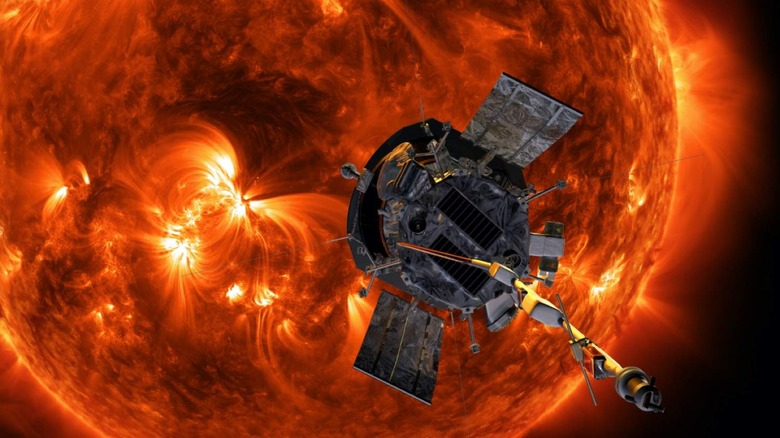NASA Solar Probe Grazes A Venus Mystery On Its Slingshot To The Sun
NASA's Parker Solar Probe may be focused on the Sun, but that doesn't mean the space agency's scientists are going to give up on an opportunity to snatch the first live data from Venus' atmosphere in almost three decades. The probe is currently swinging through space, using Venus' gravity to bring it closer to the Sun each time, and in the process has been getting nearer and nearer to the planet's surface.
In fact, on July 11, 2020, the Parker Solar Probe was a "mere" 517 miles from the surface of the Venus. That brought it low enough to graze through the Venusian atmosphere, the first time that a spacecraft has been able to take a direct measurement of that region since Pioneer Venus Orbiter in 1992.

At first, however, the scientists didn't realize what new data they had. It took Glyn Collison of NASA's Goddard Space Flight Center in Greenbelt, Maryland – familiar with all of the agency's previous Venus mission data – to spot what's described as a "thin frown" in the data. That was a natural, low-frequency radio signal in the FIELDS instrument.
FIELDS consists of a trio of magnetometer, and is designed to measure magnetic fields in the Sun's solar corona. However, for seven minutes near Venus – that happened to coincide with Parker Solar Probe being at its closest point to the planet – FIELDS also registered a signal. "A similar frown appeared whenever the spacecraft passed through the ionospheres of Jupiter's moons," NASA explains.
In fact, it's the ionosphere of the planet – a thin layer of electrically-charged gas at the very edges of Venus' atmosphere – which it detected. Thanks to that, it became possible to confirm the density of the ionosphere. Measurements of that could be compared with the findings of Pioneer Venus Orbiter nearly three decades ago.
In the process, it allowed a long-standing mystery to be further explored. When Pioneer Venus Orbiter took its measurements, the Sun was near the most aggravated peak of its solar cycle, known as solar maximum. As it ebbed toward solar minimum over the following years, it appeared that Venus' ionosphere became thinner. However scientists only had Earth-based telescopes with which to observe those changes.
Now, it's clear from Parker Solar Probe's findings that the ionosphere is indeed thinner. A new paper published today documents the changes.
As for why it happens, and why it's important, there there's still some uncertainty. One of the reasons Venus is so interesting to researchers is that in many ways it's a close counterpart to Earth. Both are of similar size and structure, but Venus has no magnetic field and its surface temperatures are so extreme, spacecraft have lasted at most a few hours there. Figuring out how the magnetic field changes with the solar cycle could help understand how the atmosphere on Venus – and planets like it – got stripped away, and could help further understand other planets that are potentially hospitable to life.
